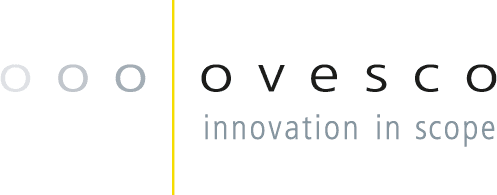Expand your horizon on resection techniques in endoluminal surgery.
This was the underlying topic of our webinar which took place as livestream event on July 15th, 2020, moderated by Prof. Dr. Horst Neuhaus, Evangelisches Krankenhaus Düsseldorf, Germany and Prof. Dr. Alexander Meining, University Hospital Würzburg, Germany. The lectures provided latest insights and outlined new perspectives into optimized resection techniques like EMR+, ESD+ and (Hybrid-) FTRD. Benefit from the experience of clinical experts and get to know new possibilities in interventional endoscopy by watching the video.
The recorded webinar is available on www.ovesco.com, YouTube and endoscopy campus.
The first lecture on „Hybrid-EFTR-EMR – Full-thickness resection as advanced resection technique for gastrointestinal neoplasia” presented by Prof. Dr. Karel Caca, Klinikum Ludwigsburg, Germany, introduced the Hybrid-FTRD technique which is applied for lesions that have a lot of scarring or non-lifting sign, thus are not resectable with EMR anymore. It is a combined technique in which first the lifting parts of the lesion are resected with EMR and subsequently the remaining non-lifting part with FTRD. Prof. Caca showed two video cases of cecal lesions in which he performed this combined technique and outlined his publication of 10 Hybrid-FTRD cases and gave prospect on further cases to be published. He concluded that by now nearly a 100 % of benign colorectal lesions can be resected endoscopically and that Hybrid-FTRD is closing an important therapeutic gap.
Find out how Prof. Caca selects patients for EMR, ESD and FTRD in the video. Further questions addressed in the subsequent discussion were:
• How about the risk of intraprocedural or delayed perforations?
• Should you perform the procedure in one or in a two-step session?
• How should patients be informed before such an intervention in case of an accidental non-lifting part encountered during an EMR procedure?
In the second lecture “EMR+ and ESD+: Easier and faster thanks to multi-channel technique and LiftUp® injection” presented by Prof. Dr. Alexander Meining, University Hospital Würzburg, Germany, he showed that the already known “grasp-and-snare technique” with the double-channel endoscope can be optimized by the use of the AWC® (Additional Working Channel). Together with the injection solution LiftUp the techniques EMR+ and ESD+ can help to facilitate and speed up endoscopic resection of large lesions. He presented a case series with 8 patients, 4 were treated with EMR+ and 4 with ESD+. 6 out of 8 specimen were resected R0. Prof. Meining concluded that AWC and LiftUp, enabling the techniques EMR+ and ESD+, open up new possibilities for endoscopic resection.
Find out in which situations Prof. Meining is using EMR+ and how snare tip incision can further optimize this technique in the video. Further questions addressed in the subsequent discussion were:
• If the AWC is used for EMR+ for colorectal lesions, is there not the risk that you lift too much? How to avoid the risk to entrap muscle layer?
• During ESD+ with LiftUp more frequent bubbles were observed compared to other solutions like saline or hyaluronic acid. How can we reduce the bubbles?
• What are the appropriate lesions to start with when using these techniques?
In the final lecture “FTRD® in T1 tumors: Expanding the horizons for early colonic cancer” presented by Dr. Barbara Bastiaansen, UMC Amsterdam, Netherlands, it was outlined that the incidence of T1 colorectal cancers is rapidly increasing due to better screening. Precise histological assessment of all risk features as critical factor to determine whether a patient is cured or still needs surgery is still a problem. Dr. Bastiaansen substantiates that by showing two studies underlining missed potential of endoscopic cure and the overuse of surgery. She further showed the preliminary results of the Dutch FTRD registry including more than 700 patients, more than half of them being T1 related. The results showed that histology for optically suspect lesions turned out to be cancer in 85 % of the cases, indicating that it is difficult to precisely see macroscopically if it is high grade dysplasia or early invasive cancer. Successful risk stratification was possible in 98.5 %, curative resection in 60.7 % overall. Dr. Bastiaansen concluded that EFTR for T1 CRC is here to stay because of the ability to perform a safe transmural resection for T1 CRC, to thereby deliver optimal histology and risk stratification and thus expanding the therapeutic possibilities.
Find out how the question has been discussed if submucosal invasion of more than 1000 µm is the only risk factor to be safe enough to avoid surgery in advanced cancer in the video. Further questions addressed in the subsequent discussion were:
• Why could the administration of stool softener reduce the risk of delayed perforation?
• How to apply FTRD in a lateral spreading tumor with a nodule within an area of a lateral spreading non granular tumor?
If you want to find out more about the products and techniques visit our website www.ovesco.com or follow one of the links:
FTRD technique
FTRD Brochure
EMR+ & ESD+ technique
RESECT+ Brochure
Clinical videos on EMR+, ESD+ and FTRD


 English
English  Deutsch
Deutsch